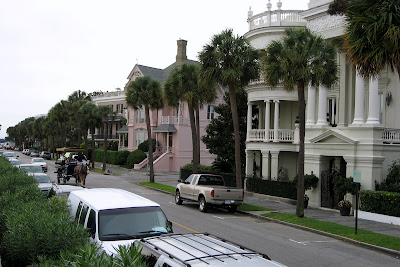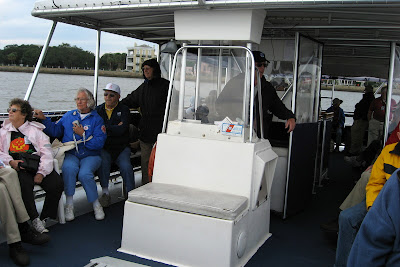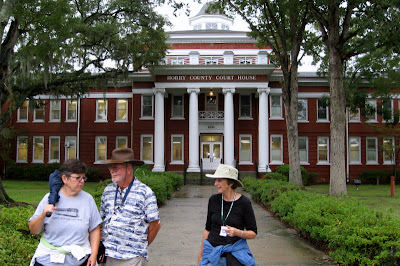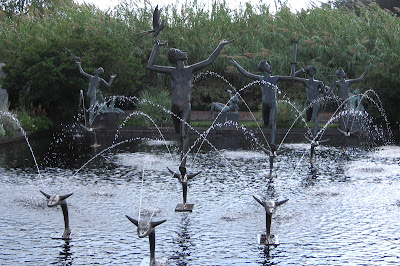We drove to the Isle of Palms, a beach community. Isle of Palms is built like Harbor Island or Shelter Island – a thin neck leading to an island that goes some distance left and right, but in this case it is all residential.
Nothing particularly interesting, but the beach—accessed from a county park—was nice. The usual shell hunting, people watching, and horizon gazing.
A very large ghost crab stood outside his subterranean home in the dry sand about twenty feet from me. He has strong survival skills, as proved by his size and attitude. If I moved just a foot, he would dash inside.
Lunch was at a very old and rustic restaurant call Seewee about five miles north of camp on Hwy 17. Seewee is very popular with locals and knowledgeable travelers (hah!) for its low country cooking. When we arrived, three other Airstream couples were just finishing up; other fellow caravaners arrived as we were leaving.
Marcia had crab cakes, fried eggplant, and a sweet potato casserole. She loved it, but the casserole less so. I went less low-country, ordering beer-battered shrimp, coleslaw, and onion rings—yum, as Rachel Ray would say. I believe this was also my first introduction to Palmetto Ale, my beer of choice in SC. (The Palmetto palm appears on the South Carolina state flag.)
The rest of the afternoon was spent pumpkin carving for Halloween. Our entry tied for second, and although 1st was good, Marcia slightly overestimated the sophistication of the judges in designing her entry. Our costume—Marcia’s 30-year-old fried egg and my toast & bacon—did not place, sadly.
As for bridge, the other beginners have past me by and I’m feeling nothing but frustration, so after being called “Cal” by the instructors a couple times after all these days (hey—guys can be sensitive) I decided I’d had enough and returned to the trailer to read and sulk. Mostly read.




















































